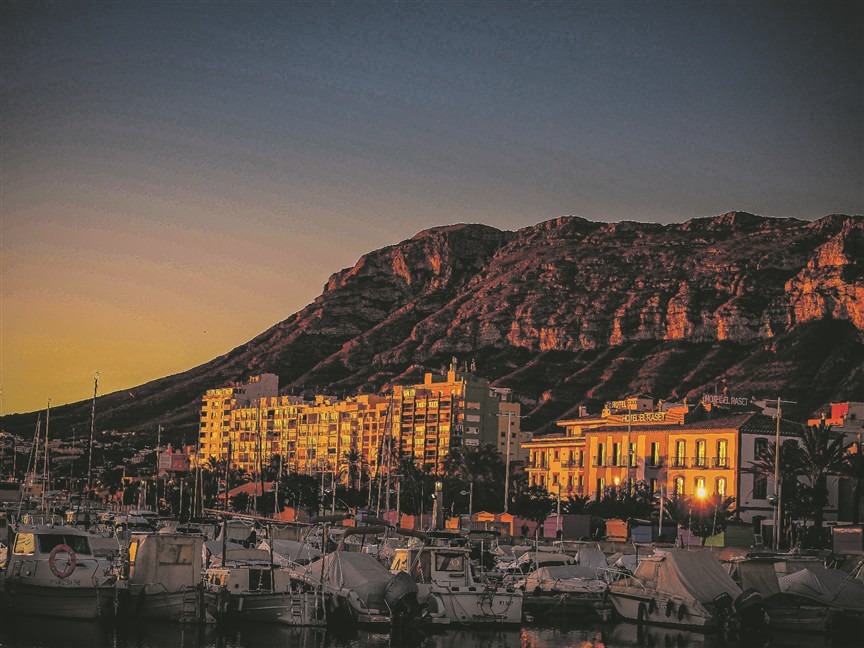
La Nucía - Spain's sports city with history & culture
La Nucía - Spain's sports city with history & culture La Nucía combines Arab heritage, international diversity and modern sports facilities. Discover


Calpe is not a backdrop, but a living coast. The town has changed, modernised and densified - while remaining independent. Between the old town, urbanisations, the sea and the mountains, life goes on all year round: diverse, pragmatic and surprisingly well organised.
Characterised by the sea
The Peñón de Ifach was there long before the city was built. 332 metres of limestone rising out of the sea - today a nature park and landmark of the entire coastline. Calpe developed around it: first a small fishing village, then a place of salt production and agriculture, later a growing community with a view of the sea.
The Baños de la Reina bear witness to Roman history, the salt pans to centuries of labour. With the boom of the 1960s, Calpe began to change - step by step, not overnight.
Old town with a view of the rock
The old town is located on a hill above the sea, opposite the rock. From there you can see the Peñón, the harbour basin and the beaches. The alleyways are narrow, cobbled, with white façades and colourful tiles, and the inhabitants are a mixture of old-timers and newcomers.
Everyday life still takes place here: small shops, workshops, bars that close at lunchtime and open again in the evening - without any touristy staging.
Residential neighbourhood with many faces
There are countless urbanisations around the town - Maryvilla, Cometa, La Canuta, Empedrola. They form the modern part of Calpe: residential areas where families, craftsmen, residents and holidaymakers live.
Many neighbourhoods are lively all year round. Schools, health centres, supermarkets, small businesses - everything is there. Calpe is not a holiday resort, but a town that works.
Salt, flamingos and city life
In the centre of Calpe lies a piece of nature: the Salinas de Calpe, a protected wetland where flamingos, herons and ducks live. The salt lake is a reminder of the town's origins and shows how closely town and nature belong together here.
The Arenal-Bol and La Fossa beaches are more than just seaside resorts - they are part of everyday life. Swimmers come in the morning, walkers in the afternoon and families in the evening.
International and down-to-earth
Around 55 per cent of Calpe's residents come from abroad - mainly from the UK, Germany, Scandinavia, Belgium and France. Many live here permanently and characterise the cityscape.
Cooperation works: bilingual schools, multilingual administration, associations and initiatives that bridge borders. People trade in five languages on the market, but they always understand each other.
Festivals and community
Despite its international flavour, Calpe remains traditional. The patron saint festivals in honour of the Virgen de las Nieves in August and the Moros y Cristianos in October are firmly established in the calendar. In May, the „Bous al Carrer“ takes place - an old, controversial but deeply rooted tradition. There is also music, exhibitions, sporting events and neighbourhood festivals that show how the community works here, even without a big fuss: Community works here, even without much fuss.
Sustainable and future-orientated
Calpe is growing, but with a plan. New residential areas are being built in an energy-efficient manner, green zones are being expanded and the cityscape is being maintained. Calpe has been honoured several times with the Viles en Flor award for its environmental policy, the maintenance of the salt pans and the promotion of urban biodiversity.
With modern sports facilities, schools, health centres and the HCB Calpe Internacional as the reference clinic for the Marina Alta, Calpe offers an infrastructure that goes far beyond tourist requirements.
Calpe is not an insider tip, but a reality - Mediterranean, lively and structured. A town that changes without losing its roots. And perhaps that is precisely why it works.
▶ Population: approx. 27,600
▶ Proportion of foreigners: around 55%
▶ Area: 23.5 km²
▶ Landmarks: Peñón de Ifach & Salinas de Calpe
▶ Special features: Urbanisations with year-round residents, Viles en Flor environmental award, functioning infrastructure
▶ Festivals: Virgen de las Nieves (August), Moros y Cristianos (October), Bous al Carrer (May)
▶ Culinary delights: fish from the Lonja, arroz del senyoret, almond and orange pastries
▶ Weekly market: Saturday (Avenida del Norte)

La Nucía - Spain's sports city with history & culture La Nucía combines Arab heritage, international diversity and modern sports facilities. Discover

Dénia - the city between the sea, Montgó and history History, harbour life and everyday Mediterranean life - why Dénia is more than just a city.

Moraira - Where the fishing spirit quietly lives on A watchtower, a harbour, a village feeling: how Moraira preserves its origins and yet